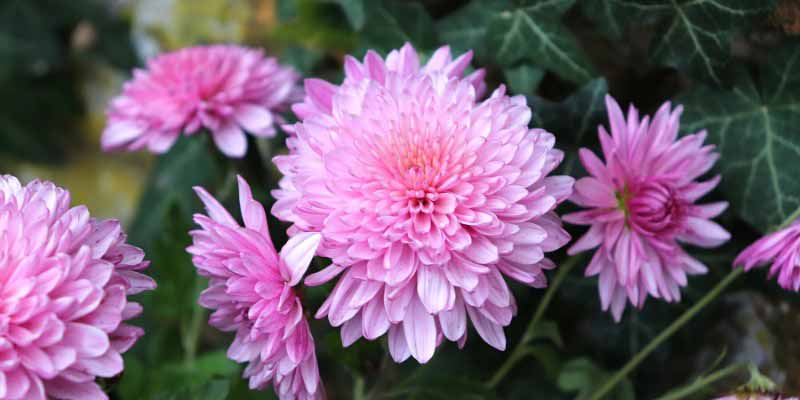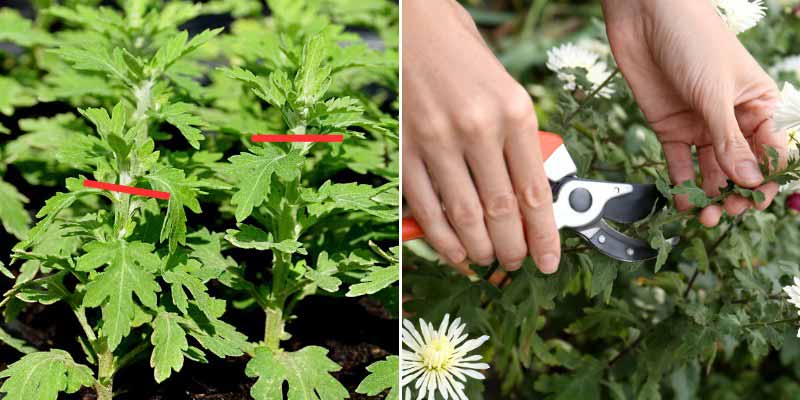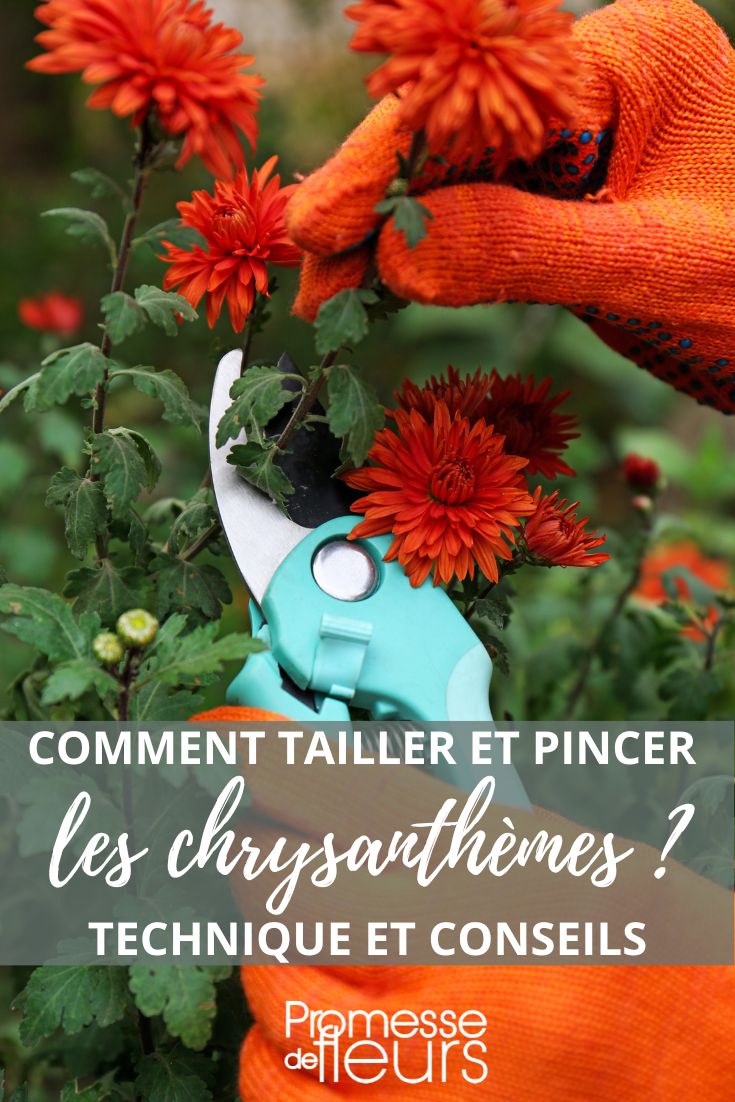Chrysanthemums are perennial plants highly valued for their summer or autumn flowering. They provide an abundance of single or pompom flowers in various bright colours from June until the frost. To optimise this flowering and allow the plant to grow vigorously, pruning and pinching are essential. When done correctly, these techniques encourage healthy growth, promote flowering, and can even extend the lifespan of these beautiful perennials. Follow our tutorial to perform the right actions!

Why pinching chrysanthemums?
Pinching encourages the branching of secondary shoots and a denser habit. Your chrysanthemums will appear bushier and therefore more resistant to the elements. They may even do without unsightly staking and produce more flowering shoots. With a bushier form, they will be less likely to flop over.
When and how to pinch chrysanthemums?
Pinch the tips of the terminal stems of your chrysanthemums in spring, around mid-May, 2 to 3 weeks after planting. We also recommend pinching them during the season around July to achieve a greater number of flowers.
Pinching involves removing the top part of the new shoot once it has reached about 15 cm in height. By doing this, you encourage the plant to branch out more, ultimately leading to a denser and fuller flowering. Pinching is done by taking the tip of the shoot between your thumb and index finger and pinching it off. Make sure to leave at least two pairs of leaves on the stem to stimulate branching:
- To achieve a sturdier plant, keep only 5 to 8 strong stems and in June, cut back the young shoots to 10 to 15 cm
- Also remove faded flowers as they occur to encourage the plant to produce new ones and extend the flowering period

Why pruning chrysanthemums?
Annual pruning of chrysanthemums is important. It allows these beautiful autumn flowers to maintain a lovely bushy habit and promotes the appearance of new flowers.
When and how to prune chrysanthemums?
Pruning is done in early spring as soon as the risk of frost has passed. At this time, the plant comes out of its winter dormancy and prepares for a new growing season. A simple spring clean may suffice. For this, using well-sharpened and disinfected pruning shears, simply cut back the dry or dead stems at their base in March-April, as vegetation starts to resume. This refreshes the clump. A more severe cutback in March helps maintain a compact and well-branched habit. To prune:
- Disinfect your pruning shear with alcohol to prevent the spread of diseases
- Remove dead and dry shoots or
- Cut the clump back to about 20 cm above the ground
- Discover the green pruning technique for perennials
Necessary equipment
- Well-sharpened and clean pruning shears (disinfected with 70°C alcohol)
































Comments